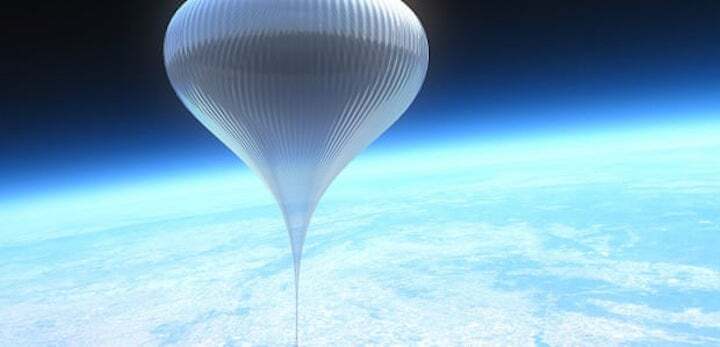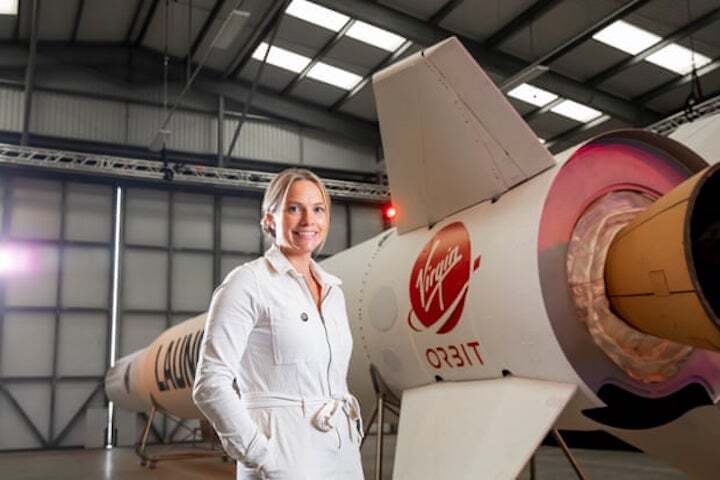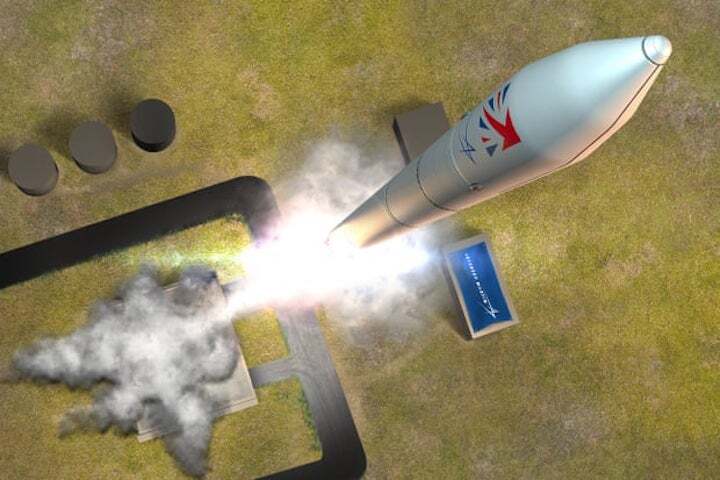In the next 12 months, Britain is expected to make a remarkable aerospace breakthrough. For the first time, a satellite will be fired into orbit from a launch pad in the United Kingdom.
It will be a historic moment – though exactly where this grand adventure will begin is not yet clear. A series of fledgling operations, backed by the UK Space Agency, are now competing to be the first to launch a satellite from British soil.
One is based in Cornwall, where a Virgin Orbit jumbo jet is set to carry a LauncherOne rocket to a height of 35,000 feet, where it will then be fired to propel its satellite cargo into orbit. The first flight is scheduled for late summer.
By contrast, rival Scottish spaceports – one in Sutherland and one on Shetland – are preparing more direct routes, with each announcing plans to launch two-staged rockets that could put satellites round the Earth in late autumn.
In addition, proposals have been announced to build spaceports in Scotland at Campbeltown, Prestwick and North Uist, while Wales’s B2Space, based in Snowdonia, has revealed its own, unusual method for getting into space: by balloon. It plans to release a helium-filled dirigible which will carry a rocket to a height of more than 20 miles. The launcher will then be fired, carrying its satellite cargo into orbit.
Some of the remotest parts of the British Isles will soon reverberate to the sound of rocketry and space launches, with the Cornish, Sutherland and Shetland programmes rated as the most likely to see first successes next year.

B2Space’s Colibri Programme balloon. Photograph: B2Space
Each of these spaceports has stressed the carbon-friendly, re-usable aspects of its operations and, in general, have received cautious support from most local people. An example is provided by Sutherland Spaceport – which is based on a 12-acre site in the middle of the Melness Crofters‘ Estate on the A’Mhoine peninsula on the very northernmost part of mainland Scotland. Crofters there graze cattle, catch fish and tend the land but have welcomed the £17.5m project that could soon see rockets fired over their remote homeland.
“This is not going to be the Cape Canaveral of the Highlands,” said Dorothy Pritchard, chair of Melness Crofters’ Estate. “There will only be a few launches every year. But the spaceport will provide skilled jobs for young people, and that is desperately important here. The oil industry is going, young adults are leaving, and the population around here is ageing. A spaceport will bring a tremendous boost to the area by providing jobs for skilled, educated young folk.”
Not everyone has been enthusiastic. Local landowner, the Danish billionaire Anders Povlsen, has claimed the spaceport would harm his plans to rewild the area. Earlier this year, a judicial review threw out a bid by him to have the project blocked, however, and Povlsen has since announced that he will not appeal against the decision.

Melissa Thorpe, head of Spaceport Cornwall, with a Virgin Orbit craft.
Space Hub Sutherland’s first launch is tipped for late autumn when a Prime rocket – built by Orbex, a UK-based launcher manufacturer – is scheduled to make its maiden flight from the spaceport. Orbex describes its Prime rocket as “one of the most advanced, low-carbon, high-performance micro-launch vehicles in the world”.
The spaceport lies on mainland Britain’s remotest corner, though its location looks positively bustling compared with its Shetland rival, SaxaVord Space Port, which is being built at Lamba Ness on Unst, the most northerly inhabited island in the UK, 400 miles north of Edinburgh. Its Pathfinder rockets will be delivered next year.
The site, like Sutherland’s, offers special advantages. Many satellites – in particular, Earth monitoring spacecraft that study sea-level fluctuations and ice-sheet changes – often fly in polar orbit round the Earth, on trajectories inclined at 90 degrees to the equator. On orbits like these, the Earth revolves beneath the craft as it sweeps over the poles, allowing it to monitor the entire planet underneath it. So, blasting a rocket northwards, safely over open seas and not over inhabited land, gives spaceports such as Sutherland’s and SaxaVord a key benefit.
“What we really have to concentrate on is making sure we have as much flexibility as possible in our operations,” said Scott Hammond, operations director of the Shetland spaceport. “We need to be able to launch fairly big satellites, say 500kg, as well as small ones, down to 10kg, in order to attract as many different customers – who will have varying requirements for the objects that they want to put in space – as possible. And that, precisely, is what our rockets are designed to do.”

Artist impression of a Lockheed Martin Pathfinder rocket launch. Photograph: Lockheed Martin/PA
A different approach is taken by operators at Cornwall’s spaceport. Their satellite launcher will involve no fiery blast-offs but will, instead, be carried aloft, strapped to the underside of Cosmic Girl, a retrofitted 747 jet that is operated by Virgin Orbit and which will take off from Newquay airport. Virgin Orbit has already launched satellites this way, over the Pacific, and has plans to use this spaceport as its European base.
“Instead of customers having to take their satellites to a rocket pad to have them blasted into space, Virgin Orbit takes the opposite route – by coming to a site near you to offer a launch,” said Melissa Thorpe, head of Spaceport Cornwall. “It has set up bases round the world, and Cornwall will be the centre of its European operations. That will make it much easier for UK satellite builders to get their craft into orbit.”
In total, it is a striking set of launch plans with Britain concentrating on the growing market for launching small satellites, which are usually less than 500kg in weight. “In 2012, there were around 50 launches of small satellites,” said Ian Annett, deputy chief officer of the UK Space Agency, which has played a key role in setting up the nation’s spaceport network. “By 2019, there were more than 400 and the market continues to grow.
“It used to cost hundreds of thousands of dollars to put a kilo of material into orbit. However, commercial launching companies – like Elon Musk’s SpaceX– have brought that cost down to nearer $1,000.”
Such reductions are opening up low Earth orbit for exploitation by a wide range of users, from single university departments to companies planning to exploit global markets. For example, internet providers such as OneWeb have announced plans to put hundreds of small satellites into orbit to generate global broadband coverage. Others want to use them to study the impacts of climate change, carry out disaster monitoring, manufacture alloys and drugs in microgravity, test new communication technologies and to implement a host of other applications. Small satellites range from the size of an oven to a phone, and can be launched individually or in clusters.
It remains to be seen whether the UK’s fledgling space launch industry can attract enough business to keep all seven proposed spaceports busy launching these satellites. At present, however, there is confidence for their prospects. “The market potential is immense, and Britain has a chance to exploit that operation from within its own shores, for the first time,” said Annett.
Quelle: The Guardian

